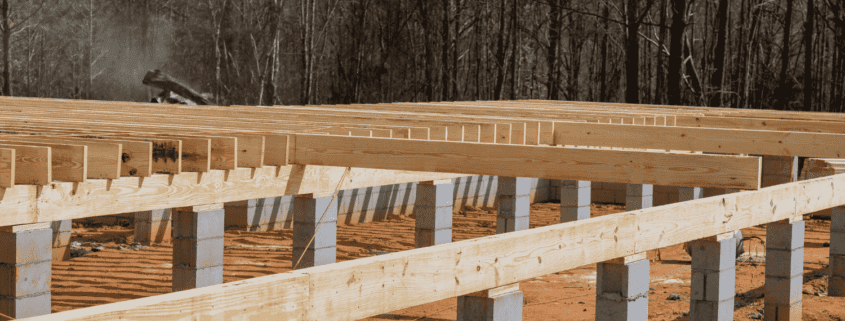Bowing Floor Joists: Why Sagging Floors Happen & How to Fix It
Bowing floor joists can cause uneven floors and structural instability. This article covers why joists bow and how to fix the problem to ensure your home’s stability. Learn about the signs, causes, and effective repair methods to keep your floors level.
Key Takeaways
-
-
Bowing floor joists can result from moisture damage, excessive weight, and construction errors, leading to potential safety hazards. This is a common issue in Northern Indiana and Southern Michigan because of the high water table!
- Regular inspections and prompt repairs are essential for maintaining structural integrity, with techniques such as sistering, installing steel jacks, and replacing joists available for repair.
- Preventative measures, including proper ventilation and dehumidifiers for reducing moisture in the air, can help mitigate moisture-related issues and reduce the risk of future bowing in floor joists.
-
Understanding Bowing Floor Joists
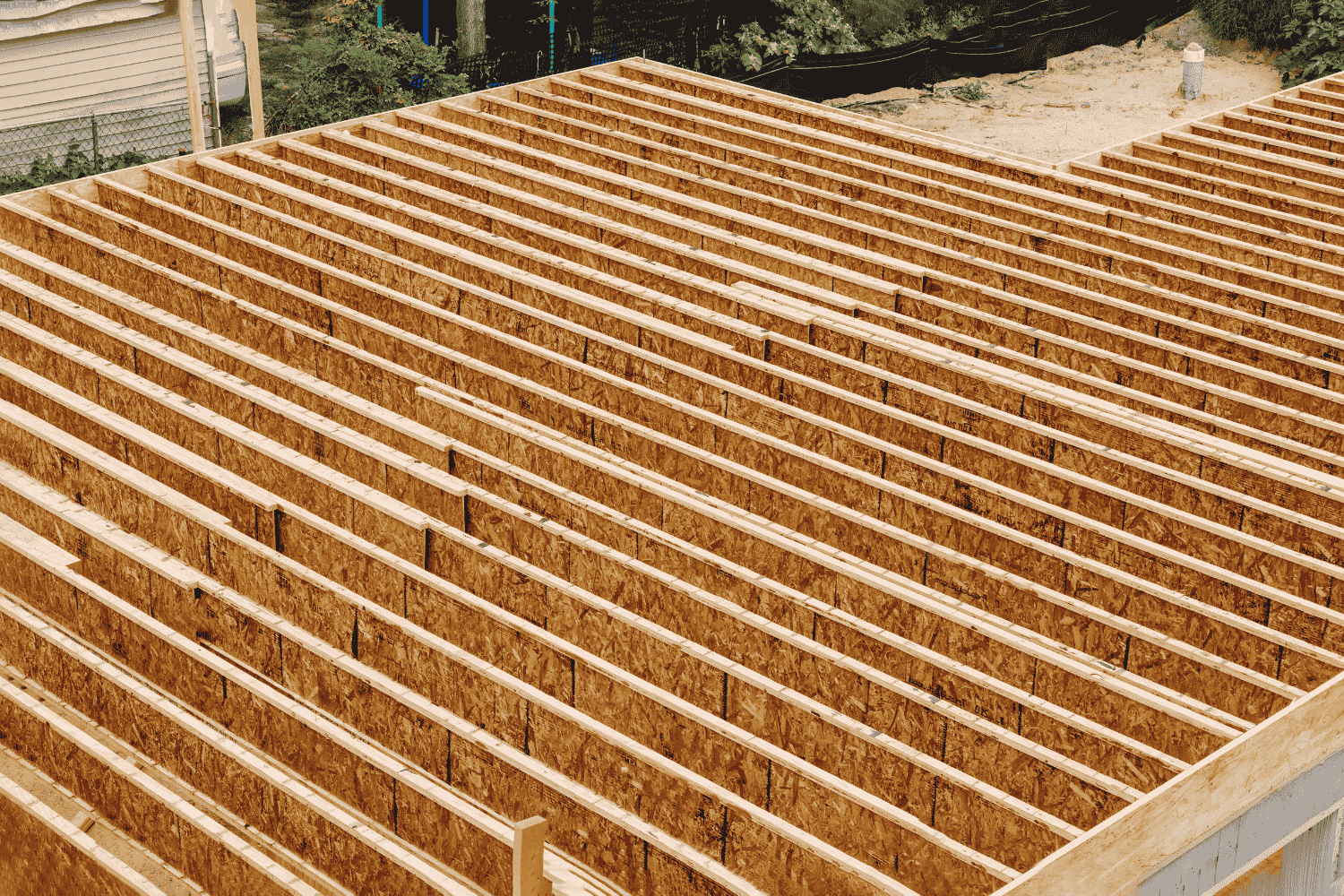
Bowing floor joists are essentially wooden beams that have deformed due to excessive weight or moisture exposure. This not only affects the stability of your floors but can also indicate deeper structural issues within your home, such as foundation problems. Repairing bowing floor joists secures the stability of your home and prevents these potential structural failures.
Neglecting these issues can lead to further complications, including sagging floors in the house, which can be dangerous and costly to repair for the site owner. Understanding the root causes and solutions helps you maintain a safe and stable living environment.
Common Causes of Bowing Floor Joists
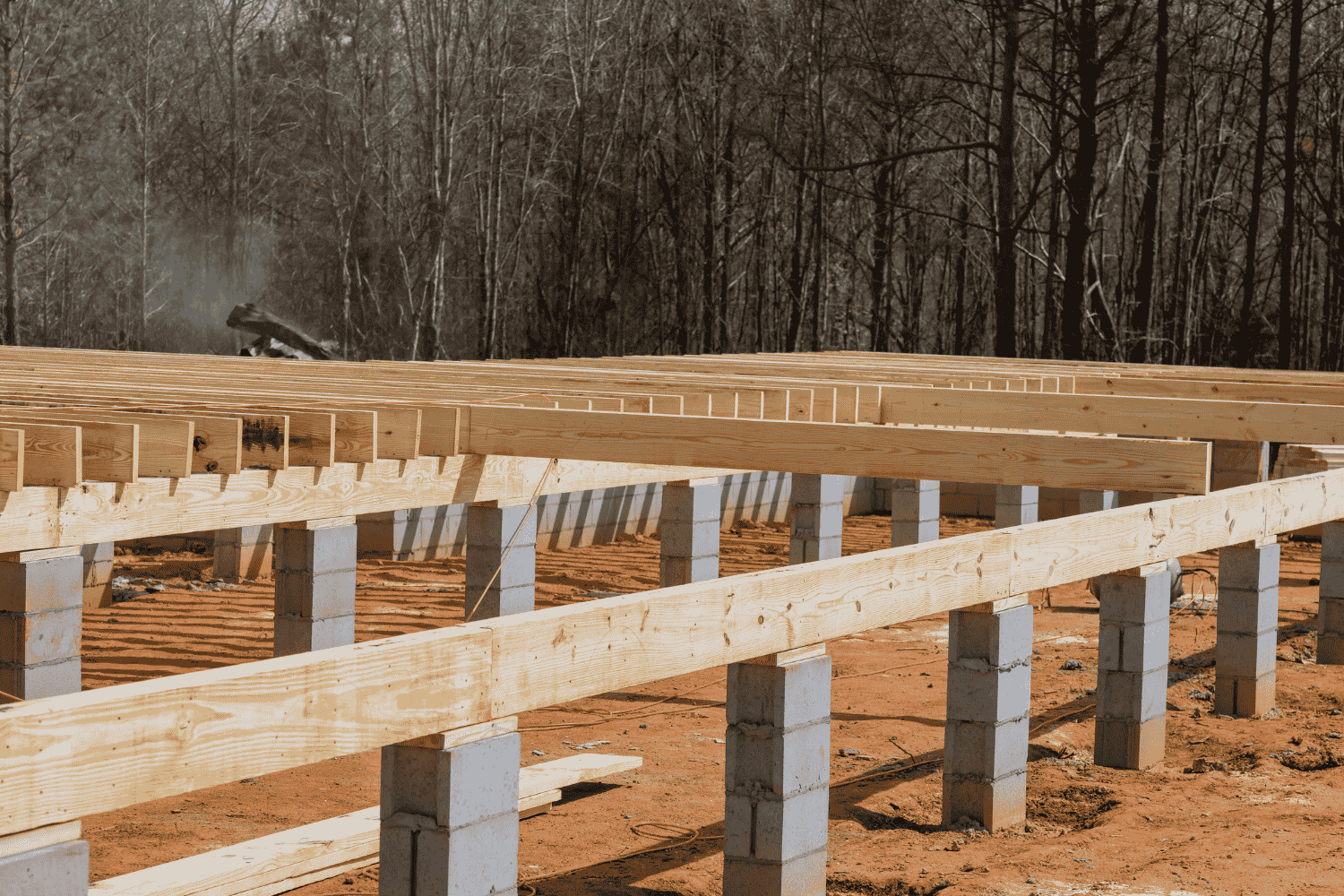
Moisture damage, structural mistakes, and excessive weight can all cause bowing floor joists. Each of these issues can severely compromise the integrity of your floor joists, leading to a sagging floor and other problems. Recognizing these causes is the initial step to address and prevent them.
In the following subsections, we will dive deeper into how moisture and humidity, excessive load, and construction errors contribute to bowing floor joists. Identifying the specific cause allows for targeted actions to fix and prevent bowing joists in your home.
Moisture and Humidity
Moisture damage is a significant factor that can weaken wooden floor joists, leading to bowing and other structural issues. High humidity levels can cause wood to absorb moisture, resulting in warping and deterioration over time. This warping can compromise the structural integrity of the floor joists, making them more susceptible to sagging.
When wood swells due to high moisture levels, it increases in weight and volume, contributing to the bowing of floor joists. Additionally, high humidity can cause wood to expand, further exacerbating the issue. Preventing these problems requires proper ventilation and moisture control.
Excessive Load
Overloading floors with heavy furniture or appliances can exceed the structural limits of floor joists, causing them to bend and eventually bow. Floor joists are designed to handle specific weight limits, and exceeding these limits can lead to gradual bending over time. Therefore, being mindful of the weight distribution on your floors is important.
Incorporating bridging or blocking between joists helps distribute loads more evenly, reducing the likelihood of bowing. Ensuring no single joist bears too much weight through proper load distribution can prevent deformation and maintain floor stability, allowing each beam to function effectively. If any joist is blocked, it can lead to uneven weight distribution.
Construction Errors
Improper construction practices, such as using incorrectly sized or spaced joists, can create weaknesses that lead to bowing. For instance, using joists that are too small or improperly spaced can compromise their ability to support the weight of the floor. These errors can result in significant structural issues over time.
Using engineered lumber products can enhance the structural integrity of floor joists and reduce the risk of bowing. These products are designed to provide better support and stability, ensuring that your floors remain level and secure.
Inspecting Your Floor Joists
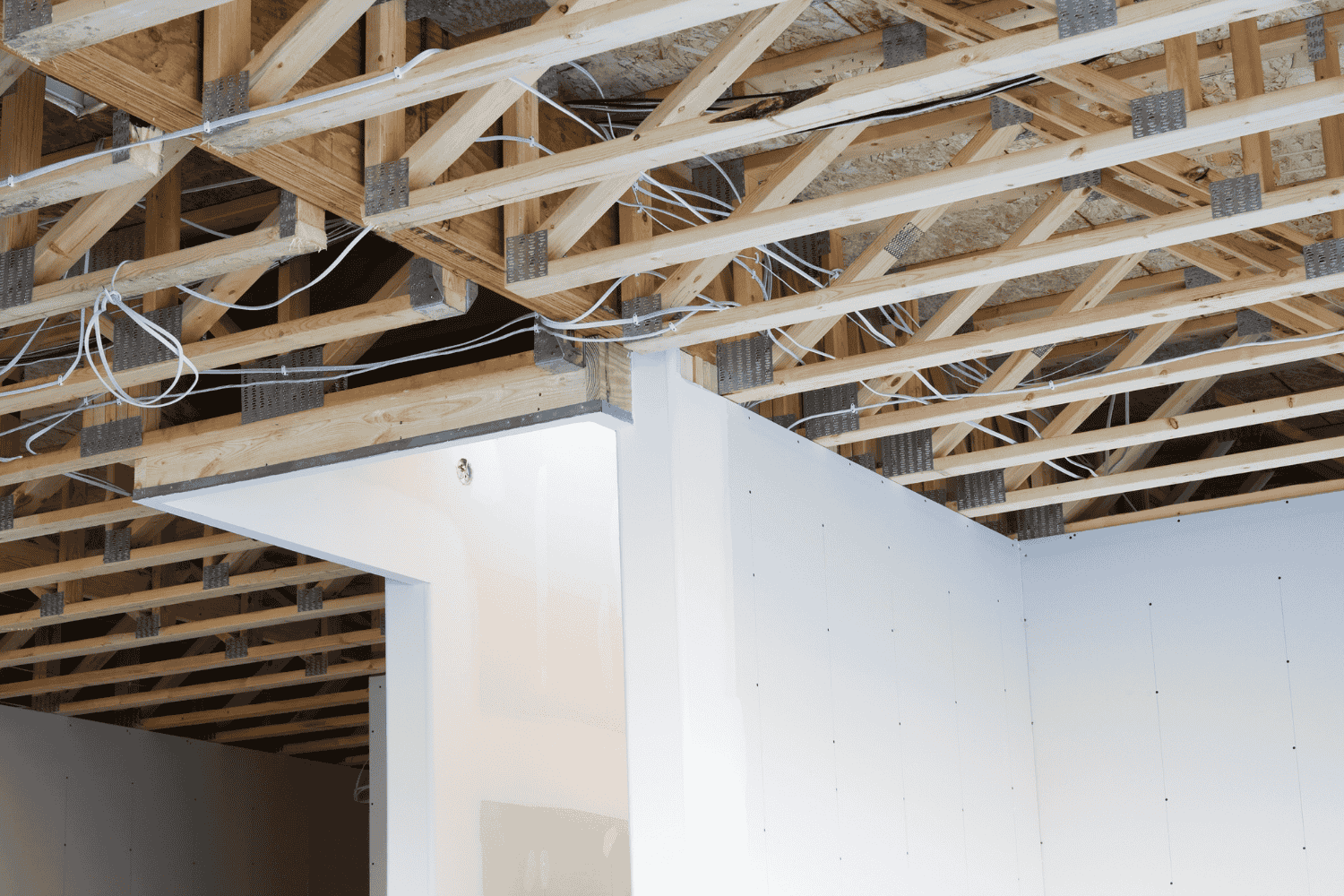
The presence of sagging floors is often a clear sign that the supporting beams and joists are damaged, which can lead to further deterioration if not addressed. Ignoring these issues can result in safety hazards, including instability that increases the risk of falls, especially among vulnerable individuals. Regular inspections of your floor joists are key to maintaining a safe home.
Start your floor joist inspection with a visual assessment, focusing on signs of sagging, rot, or pest damage. Accessing the crawl space or subfloor can provide valuable insights into the condition of your joists, allowing for a more thorough inspection. Utilize a level tool to check for discrepancies in the floor’s levelness across various sections of your home.
Signs of sagging floor joists, such as uneven or sloping floors, require immediate professional help. A timely inspection and repair can prevent further damage and ensure the structural integrity of your home.
Repair Solutions for Bowing Floor Joists
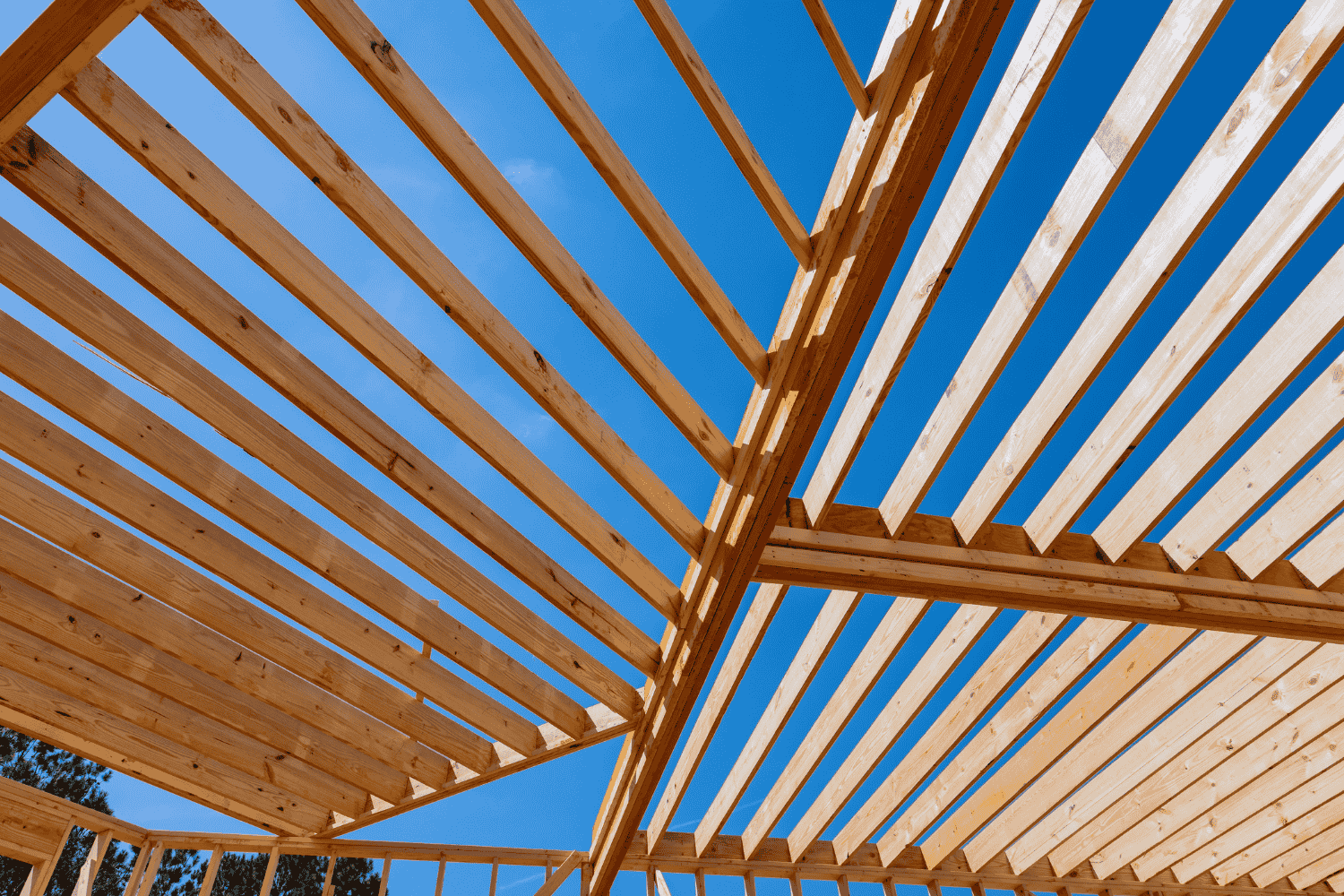
Before starting any repair work on sagging floor joists, a professional assessment is essential to determine the specific needs of your home. Foundation repair experts use various methods to address sagging floor joists, and the type of foundation can influence the repair approach. Timely repairs can prevent further structural weaknesses and potential water damage or mold growth.
There are three main solutions for repairing bowing floor joists: sistering floor joists, installing adjustable steel jacks, and replacing damaged joists. Each method has its own benefits and methods of application.
Sistering Floor Joists
Sistering involves attaching new joists alongside existing ones to enhance structural support. During the sistering process, new joists are positioned next to the existing joists and secured in place, typically using screws or nails to ensure stability. This method effectively reinforces the original joists, reducing stress and helping to prevent future bowing.
Sistering reinforces existing joists with new ones, ensuring a level floor and providing additional support, making it effective for sagging floor joists. This method is often used in basements where access to the joists is easier.
Installing Adjustable Steel Jacks
Adjustable steel jacks are devices used to provide temporary or permanent support to sagging or bowing floor joists. Installing these jacks involves measuring the height needed, positioning the jacks appropriately, and securing them in place. They can be adjusted to level floors by cranking them up or down to achieve the desired height.
Adjustable steel jacks can correct bowed joists, restoring structural integrity and improving floor levelness. This method is particularly useful in areas where other repair methods may not be feasible.
Replacing Damaged Joists
Replacing damaged joists is a more intensive repair solution but is necessary when joists are severely compromised. Before replacing a joist, ensure the area is clear and properly supported with temporary jacks. Gather necessary tools and materials such as new joists, nails, and a saw before starting the replacement process.
Remove any damaged joists carefully, ensuring the surrounding structure remains undisturbed. Install the new joists, ensuring they are level and secured properly with nails or screws. Check that the new joists are aligned correctly and provide adequate support to the flooring above. This method ensures the stability and safety of your floors.
Preventative Measures
Adequate ventilation in crawl spaces and the basement mitigates moisture-related problems affecting floor joists in the middle. Proper ventilation prevents moisture buildup, reducing the risk of wood swelling and warping. IIn addition to ventilation, using adjustable steel jacks can provide significant support for sagging joists, with the ability to bear loads up to 60,000 pounds.
A&M Home Services also offers dehumidifier installation services which can also reduce moisture-related issues. Dehumidifiers help remove excess moisture from the air, which can significantly contribute to wood warping and sagging floor joists due to high humidity levels; this is considered the most effective way to prevent further damage and potentially stabilize existing bowing.
When to Call a Professional
The bending of floor joists can severely impact the alignment of floors, walls, and ceilings, leading to significant structural issues. Engaging a structural engineer or contractor can ensure a detailed evaluation of the floor joists’ condition. A professional evaluation determines the extent of the damage and the appropriate repair solution.
Severely compromised joists should be completely replaced to ensure the safety and integrity of the floor structure. If you’re unsure about the extent of the damage, it’s always best to consult a professional.
Summary
In summary, bowing floor joists can lead to significant structural problems if not addressed promptly. Understanding the common causes, such as moisture damage, excessive load, and construction errors, is the first step in preventing and fixing the issue. Regular inspection and timely repairs, including sistering, installing adjustable steel jacks, and replacing damaged joists, can restore the stability of your home.
Taking preventative measures, such as proper ventilation and load distribution, can protect your home from future issues. If you’re unsure about the extent of the damage or the best repair solution, don’t hesitate to call a professional for a detailed evaluation. Ensuring the structural integrity of your home is crucial for maintaining a safe and stable living environment.
Frequently Asked Questions
What are the signs of bowing floor joists?
Signs of bowing floor joists include uneven or sloping floors, visible sagging, and cracks in walls or ceilings. It’s essential to address these issues promptly to prevent further structural damage.
How can moisture damage affect floor joists?
Moisture damage leads to the warping, swelling, and deterioration of wood, ultimately weakening and bowing floor joists. This can compromise the structural integrity of your flooring.
Can heavy furniture cause floor joists to bow?
Yes, heavy furniture can indeed cause floor joists to bow if the weight exceeds their structural limits, leading to potential long-term damage.
What is sistering floor joists?
Sistering floor joists means attaching new joists alongside existing ones to provide additional structural support and reduce stress on the original joists, ensuring a more stable floor.
When should I call a professional for bowing floor joists?
You should call a professional if you notice significant structural issues like severe sagging, cracks, or uneven floors, as these can indicate serious problems that need expert attention.
 574-318-3326
574-318-3326


